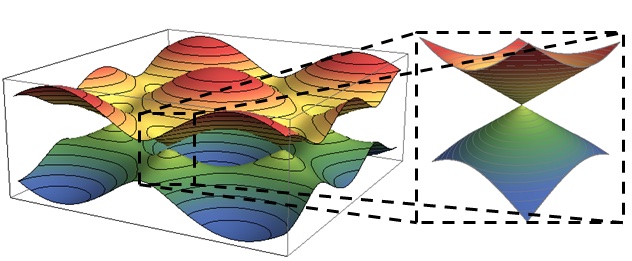Workshop
CIRM, Luminy, Marseille
https://conferences.cirm-math.fr/2923.html
Date(s) : 28/11/2022 - 09/12/2022 iCal
Toute la journée
Graphene is a bidimensional material made of carbon atoms arranged in honeycomb lattice. It enjoys amazing properties in mechanics, electronics and optics. Its electronic properties were revealed more than fifteen years ago [12, 13, 17], and the proof of existence of gapless cone structure in the energy spectrum emphasized that conducting electrons move very fast, making graphene a good candidate for being used as superconductor. However, the absence of a band gap structure in the energy spectrum of the charge carriers has some severe limitations in the possible technological applications, and it is still a challenging question to open a gap in the electronic spectrum.
Despite several advances done in the spectral theory for graphene models [3, 4, 5, 6, 8, 9, 21] the mathematical analysis of spectral gaps for relevant models remains a subject with many open questions.
Le développement récent d’études portant sur la physique du graphène a renouvelé à l’intérêt de la communauté mathématique pour l’opérateur de Dirac. Grâce à ses propriétés électroniques, le graphène est apparu comme un matériau remarquable tant du point de vue fondamental que technologique [12, 13, 17]. Cependant, l’absence de bandes d’énergies interdites dans le spectre des porteurs de charges induit de profondes limitations quant à ses applications technologiques potentielles.
Malgré de nombreuses avancées réalisés dans l’étude spectrale de modèles de graphène [3, 4, 5, 6, 8, 9, 21], l’étude mathématique des gaps spectraux reste un sujet très ouvert.
Participants
Jean-Marie Barbaroux (Université de Toulon)
Horia Cornean (Aalborg University)
Loïc Le Treust (I2M, Aix-Marseille Université)
Nicolas Raymond (Université d’Angers)
Edgardo Stockmeyer (Pontifical Catholic University of Chile)
Emplacement
CIRM, Luminy
Catégories

